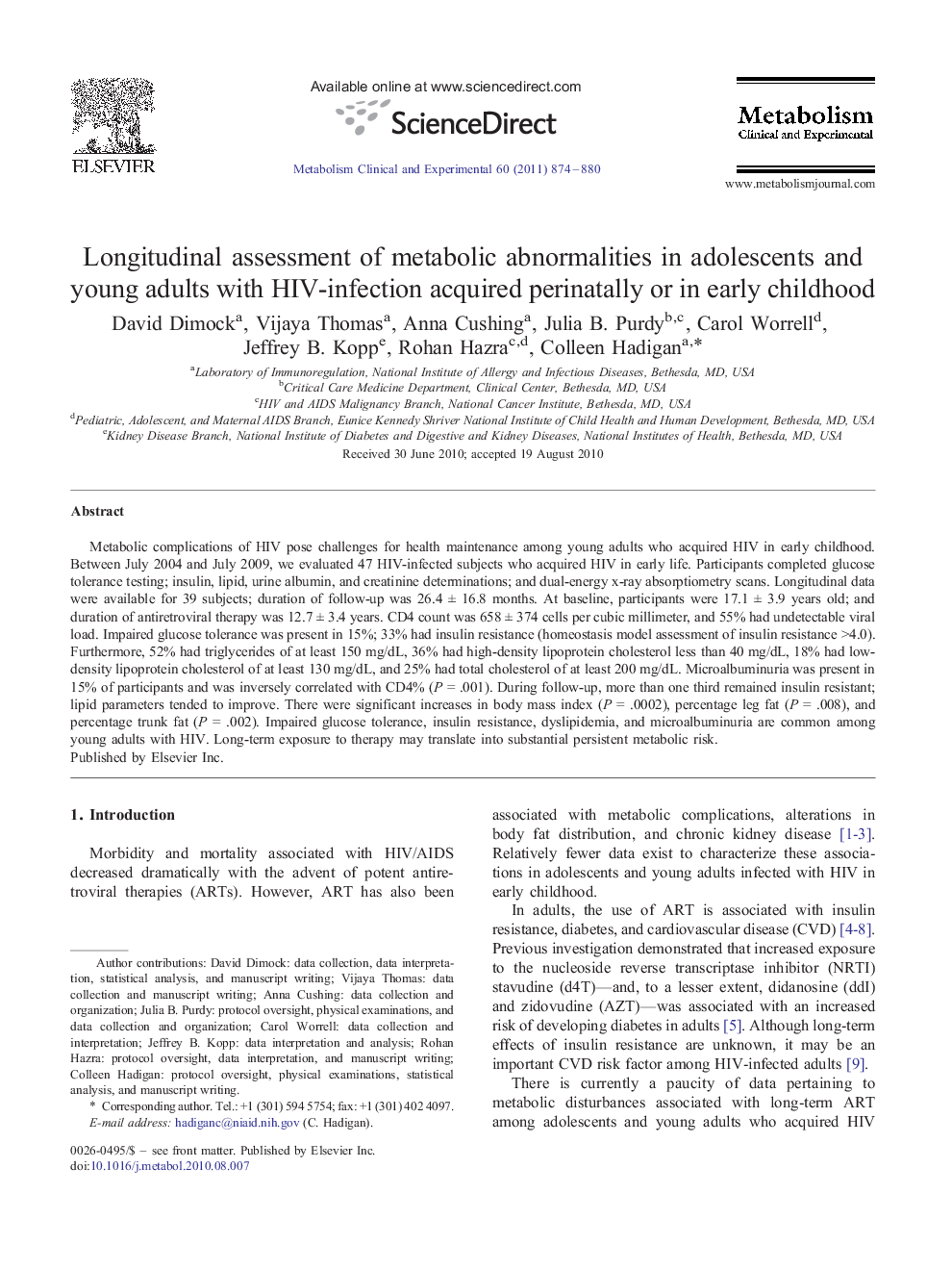| Article ID | Journal | Published Year | Pages | File Type |
|---|---|---|---|---|
| 2806481 | Metabolism | 2011 | 7 Pages |
Metabolic complications of HIV pose challenges for health maintenance among young adults who acquired HIV in early childhood. Between July 2004 and July 2009, we evaluated 47 HIV-infected subjects who acquired HIV in early life. Participants completed glucose tolerance testing; insulin, lipid, urine albumin, and creatinine determinations; and dual-energy x-ray absorptiometry scans. Longitudinal data were available for 39 subjects; duration of follow-up was 26.4 ± 16.8 months. At baseline, participants were 17.1 ± 3.9 years old; and duration of antiretroviral therapy was 12.7 ± 3.4 years. CD4 count was 658 ± 374 cells per cubic millimeter, and 55% had undetectable viral load. Impaired glucose tolerance was present in 15%; 33% had insulin resistance (homeostasis model assessment of insulin resistance >4.0). Furthermore, 52% had triglycerides of at least 150 mg/dL, 36% had high-density lipoprotein cholesterol less than 40 mg/dL, 18% had low-density lipoprotein cholesterol of at least 130 mg/dL, and 25% had total cholesterol of at least 200 mg/dL. Microalbuminuria was present in 15% of participants and was inversely correlated with CD4% (P = .001). During follow-up, more than one third remained insulin resistant; lipid parameters tended to improve. There were significant increases in body mass index (P = .0002), percentage leg fat (P = .008), and percentage trunk fat (P = .002). Impaired glucose tolerance, insulin resistance, dyslipidemia, and microalbuminuria are common among young adults with HIV. Long-term exposure to therapy may translate into substantial persistent metabolic risk.
